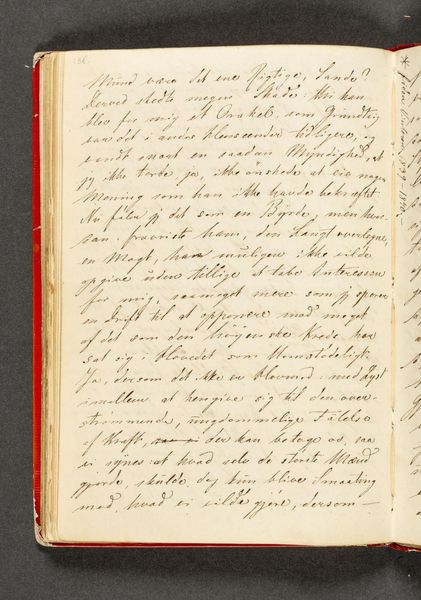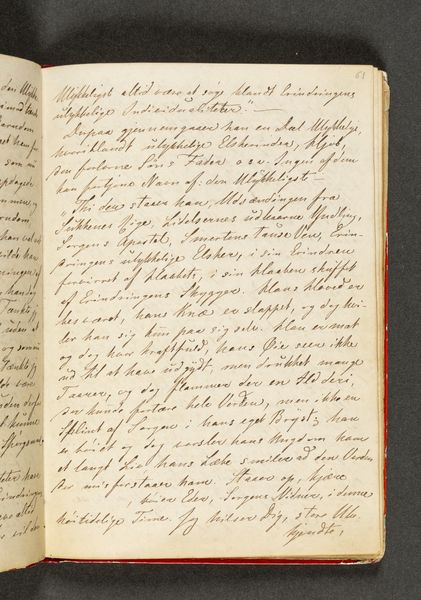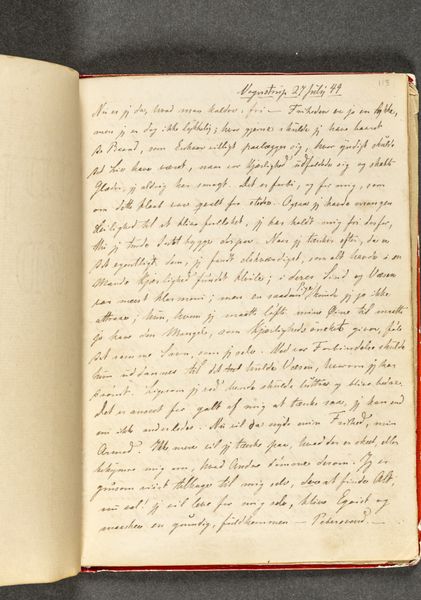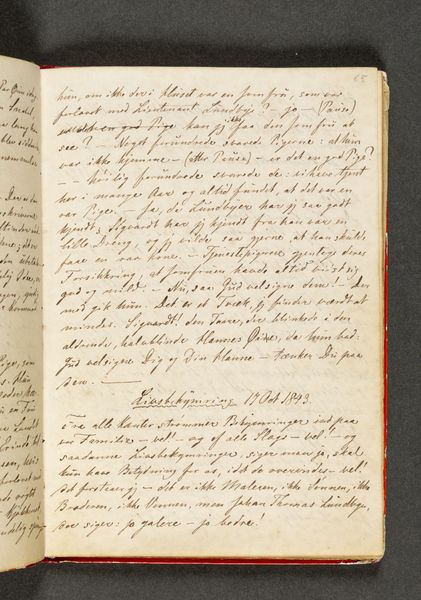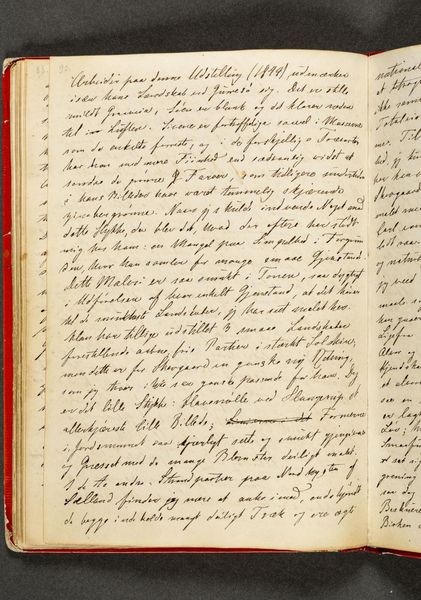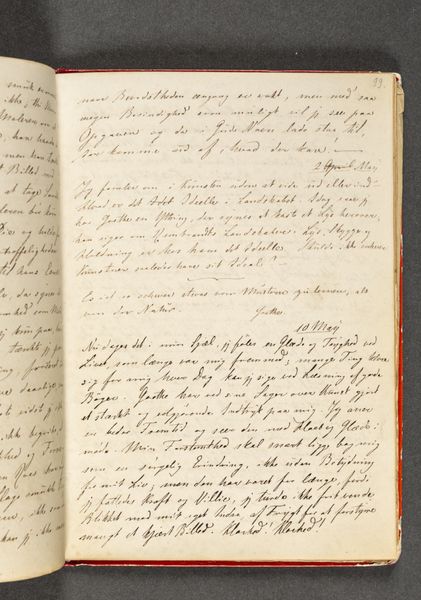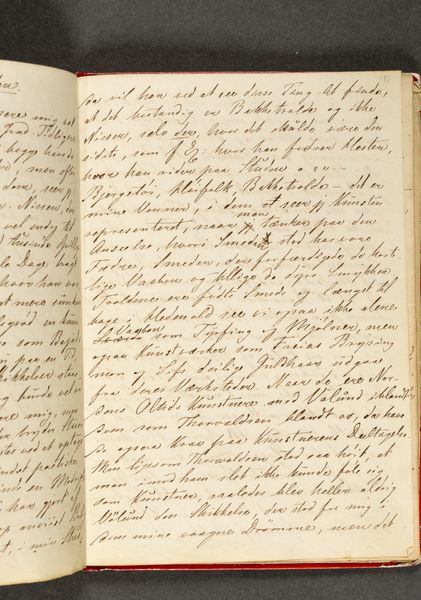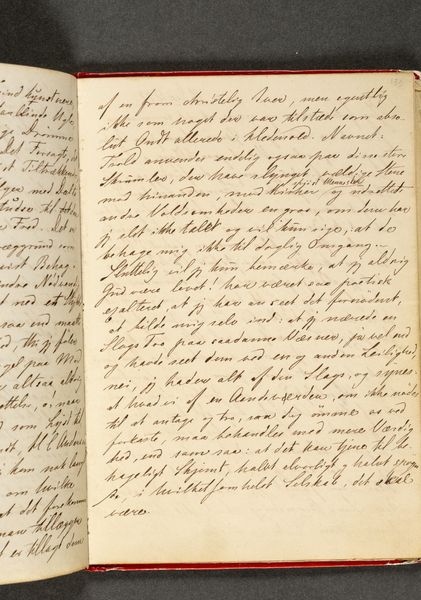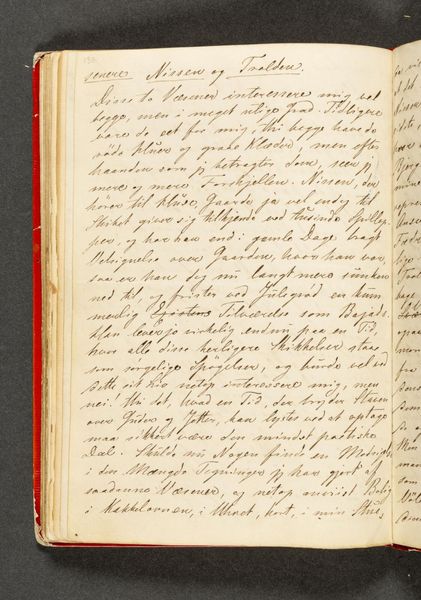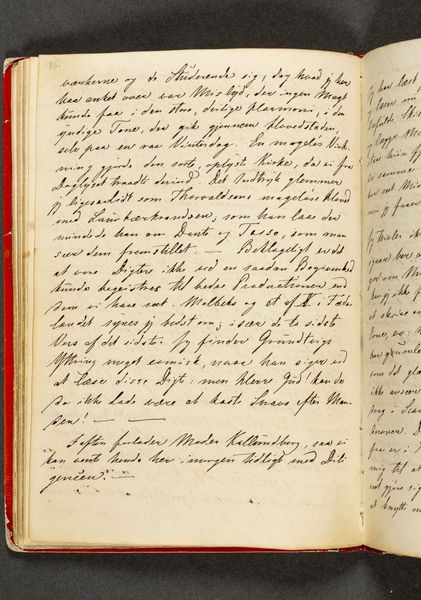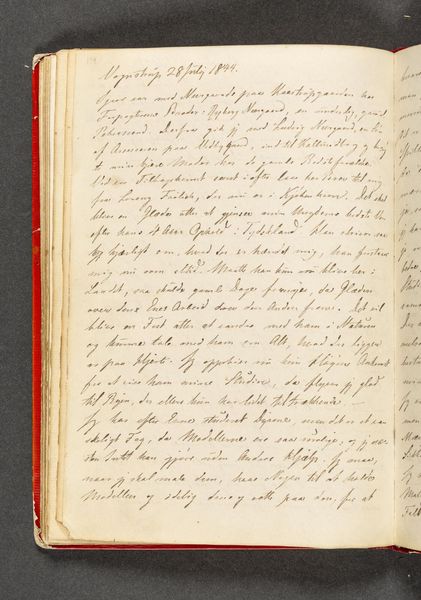
drawing, textile, paper, ink
#
drawing
#
sketch book
#
textile
#
paper
#
ink
#
romanticism
#
sketchbook drawing
#
calligraphy
Dimensions: 192 mm (height) x 133 mm (width) (bladmaal)
Editor: Here we have "Last Page. Diary. Page 140," a drawing by Johan Thomas Lundbye from 1844, made with ink on paper. It has such a final, personal feel to it. What catches your eye when you look at this? Curator: This script… it evokes such a deep well of cultural memory. The visual weight of handwriting connects us directly to Lundbye’s time and thought. Calligraphy in itself has long been associated with Romanticism, speaking to individual expression through emotionality. Note the "finis" at the very end, so demonstratively and symbolically final. Editor: “Finis” meaning the end. Right, it does feel so conclusive. Almost dramatic. Curator: Precisely. This isn’t simply a neutral record. Lundbye presents his emotional state as something to be remembered and carefully, elegantly, inscribed. Is there a sense that these final words are performative, intended for an audience? This could even indicate a conscious construction of self. Think about the selection of experiences and reflections deemed worthy of immortalization on the "last page." Editor: So it is more than just diary notes – but a carefully crafted narrative for himself, and potentially for others. Curator: Yes. How do the contents of this writing interact with its visual presentation? Think about Romanticism's fascination with capturing interiority, framing emotions, and preserving memories through visual symbolism. Is there, in other words, continuity between these entries and Romantic ideology? Editor: I now see this page not just as an artifact but also as a self-aware and symbolically loaded work. Curator: And its lasting emotional power comes from its careful performance.
Comments
No comments
Be the first to comment and join the conversation on the ultimate creative platform.


